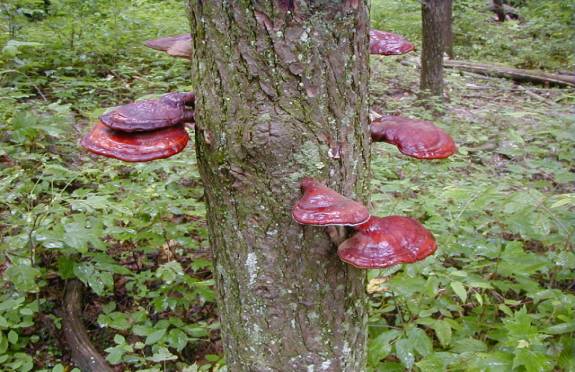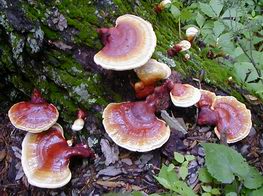|
Common Name: Hemlock Polypore, Tsuga Reishi, Sung-shan-ling-chih Scientific Name: Ganoderma tsugae (From Hemlock, Tsuga canadensis)
A large bracket polypore fungus that ranges in size from 10 to 100 centimeters across in a fan shape with a shiny (appearing varnished) cap surface. Found almost exclusively on dead and dying hemlocks, it gets less shiny and darker red with age.
Potpourri: The hemlock polypore is a medicinal fungus. It has been found to be therapeutic in the treatment of tumors (anti-cancer), immune deficiencies, and high blood pressure. It contains triterpenoids, which are steroid-like compounds that inhibit cholesterol synthesis and the production of histamines that cause allergic response.
Recent
research indicates that Ganoderma
may be effective in the treatment of Alzheimer's
The closely related Ganoderma lucidum (right) is widely used in Chinese folk medicine and is available in Asian markets under the name Reishi or Ling Chi. It reportedly has the highest sales volume of any medicinal in the health food market of Taiwan. It grows on hardwood trees in lieu of hemlocks.
A health tonic can be prepared from the hardened fruit bodies by grinding them into a powder and brewing them like tea. |

 Disease due to its anti-inflammatory activity.
Disease due to its anti-inflammatory activity.